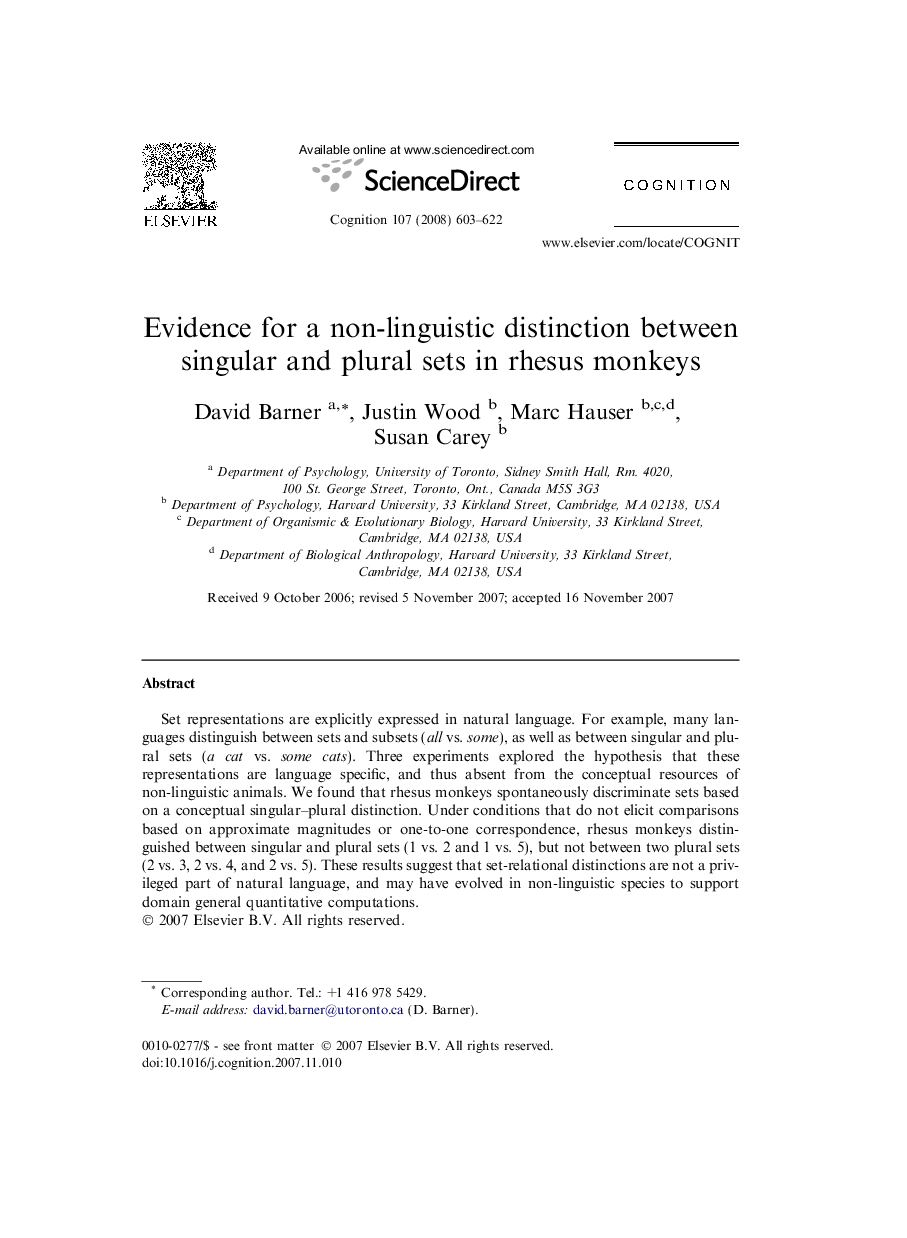| Article ID | Journal | Published Year | Pages | File Type |
|---|---|---|---|---|
| 927136 | Cognition | 2008 | 20 Pages |
Set representations are explicitly expressed in natural language. For example, many languages distinguish between sets and subsets (all vs. some), as well as between singular and plural sets (a cat vs. some cats). Three experiments explored the hypothesis that these representations are language specific, and thus absent from the conceptual resources of non-linguistic animals. We found that rhesus monkeys spontaneously discriminate sets based on a conceptual singular–plural distinction. Under conditions that do not elicit comparisons based on approximate magnitudes or one-to-one correspondence, rhesus monkeys distinguished between singular and plural sets (1 vs. 2 and 1 vs. 5), but not between two plural sets (2 vs. 3, 2 vs. 4, and 2 vs. 5). These results suggest that set-relational distinctions are not a privileged part of natural language, and may have evolved in non-linguistic species to support domain general quantitative computations.
